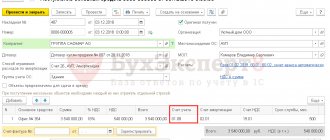General information about encumbrances
First, let’s understand what an encumbrance on a property is. Encumbrance is usually understood as the status of an object in which the administrative or other rights of the owner of the property are limited to one degree or another in the interests of third parties.
As a rule, an encumbrance is a security measure that guarantees the interested party that the owner of the property will fulfill the assumed property obligation. (hereinafter referred to as Federal Law No. 218) provides, in particular, for such types of encumbrances on real estate as:
- mortgage - an apartment is pledged to the bank and cannot be sold without its knowledge (hereinafter referred to as Federal Law No. 102);
- rent - the transfer of ownership of housing obliges the new owner to pay rent payments to the former owner ();
- arrest is a coercive measure that excludes the possibility of alienation of the debtor’s property (hereinafter referred to as Federal Law No. 229);
- lease – obliges the owner to transfer the object for temporary use to a third party ().
It is important to remember when purchasing real estate with an encumbrance that this restriction may have a different composition, nature and legal nature.
Read more about this in the material “What are restrictions on rights and encumbrances on real estate.”
Use of maternity capital
You can remove the restriction from an apartment purchased with a mortgage if you pay off the remaining debt with a maternity capital certificate. In this case, it is important that the children have registration in the apartment. The parents will be required to draw up a special agreement on the subsequent division of property.
When the encumbrance is lifted, the shares of the property will be divided, confirming this with documents.
Shared ownership must be registered no later than 6 months from the date of removal of the encumbrance at the expense of maternity capital. If this deadline is violated, the case will be referred to the prosecutor's office.
Also, this process will be under the supervision of guardianship authorities that protect the rights of children. If the interests of the children are violated and they are not included in the shared ownership, the transaction will be cancelled.
How to find out about encumbrances
Since encumbrances narrow the owner’s rights, including the right to sell an apartment, to ensure the legal purity of completed transactions, it is important to make sure that there are no such restrictions.
All encumbrances, according to Art. 9, are entered into the general real estate register (EGRN), which is public. This means that all information is publicly available and any interested party can check whether the seller has ownership of the property or whether there are encumbrances on a specific item of sale.
This can be done in two ways:
- contact the local branch of Rosreestr or the MFC with a request to provide information from the Unified State Register of Real Estate. The rules for submitting such a request, the procedure for providing information contained in the Unified State Register of Real Estate, the necessary documents and other features are determined by the Procedure, approved. ;
- use, thanks to which you can get the necessary information online, knowing only the exact address of the property.
What is needed for this, read the article “How to check whether there is an encumbrance on real estate.”
What objects may be affected by this measure of influence?
Immovable things (according to clause 1 of Article 130 of the Civil Code of the Russian Federation) are plots of land, subsoil and all things firmly connected to the land that cannot be moved without disproportionate damage to their purpose (buildings, structures, unfinished construction objects).
This also includes aircraft and inland navigation vessels that are subject to state registration. The law may classify other property as real estate.
This also includes residential and non-residential premises, as well as parking spaces, if the boundaries of such premises, parts of buildings, structures are described in the manner established by the legislation on state cadastral registration. In this way, it is possible to establish a ban on the sale of the property indicated above.
Who has the right to encumber real estate
As mentioned above, the encumbrance is always imposed in the interests of third parties interested. As a rule, those in respect of whom the owner has outstanding property obligations can place an encumbrance on real estate.
It is logical to assume that depending on the obligation, not only the form of the encumbrance may differ, but also the person in whose interests administrative restrictions will be imposed. Thus, the interested party who has the right to submit an application for registration of an encumbrance is usually:
- Under mortgage agreements, collateral, and other loan agreements - the lender. The restriction is a guarantee that the lender will be able to repay the loan provided, including at the expense of the encumbered real estate.
- Under lease agreements - the tenant, including if this is an encumbrance on the rental of non-residential premises. In this case, the encumbrance makes it possible to guarantee the preservation of the tenant’s rights even if the owner of the property alienates it in favor of third parties.
- Under annuity agreements, the recipient of the annuity. The property transferred to him is considered encumbered until the current owner is obliged to transfer rental payments to the recipient's account. This is a guarantee of their preservation and non-alienation of the apartment without the knowledge of the rent recipient.
- In case of arrest - a court or a bailiff. Officials place an encumbrance on real estate as a measure of security for an unfulfilled obligation (for example, an outstanding bank loan) or a guarantee of compensation for harm caused (in criminal cases, where the sanction of the article provides for confiscation).
- Under trust management agreements - a trustee. The rights of the owner are limited by the rights of the manager.
The owner himself can also initiate the introduction of restrictive measures. But whoever the initiator is, before making an encumbrance, he must have in his hands a properly executed agreement that creates the obligations of the owner. Other documents are also needed. We suggest taking a closer look at the procedure for registering restrictions.
What to do if your mortgage is paid off
Receive a certificate from the bank that the loan is closed
Let the institution’s mobile application show zeros, and the manager frowns in response to requests to issue a document.
You definitely need a certificate confirming that the bank no longer has financial claims against you. It will be useful in case of system failure, human errors and other problems. For example, it may turn out that there is an unpaid penny stuck in the system, which in a year can turn into thousands of debt due to allegedly late payments. If you have a certificate with stamps and signatures in stock for such a case, it will be much easier to resolve the issue.
Remove the encumbrance
That is, in fact, get the right to completely dispose of the apartment.
Currently reading







